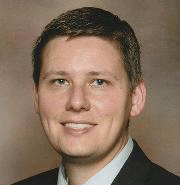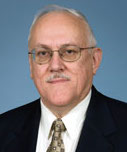
Speaker: Dr. Francesco Tamanini – FM Global
Date: October 4, 2024; Time: 2:30 PM Location: PWEB 175
Abstract: Practical fire protection challenges are often not easily amenable to solutions that can be developed from a single approach. The tools that are more frequently used include: engineering correlations, reduced-scale physical modeling, large-scale testing, computer simulations. The last two find wide application in addressing loss prevention questions. Large-scale testing, however, is very expensive and not always feasible. CFD modeling, on the other hand, is not fully reliable in the absence of experimental validation. These limitations can be overcome by combining the two approaches. The seminar will discuss two cases where that was done and will highlight the challenges that were encountered.
Biographical Sketch: After doing initial work on the computer modeling of fires and coordinating for several years FM’s research activities in the area of explosions, Dr. Tamanini moved in 2004 to the Consulting Research Scientist position and eventually to Sr. Research Fellow. In his current role, he provides support to the Manager of Research, and to the entire scientific and engineering staff, on issues spanning all research topics of interest to FM. They include: fire testing, material flammability, CFD modeling of fires and explosions, impact of natural hazards (wind, flood, earthquake) on property, risk assessment, equipment reliability, and material damage. During April 2021-June 2023 he has been the Acting Director for the Equipment, Cyber and Materials Science Area.
He has contributed original work in several technical areas:
- extinguishment of fires by water sprays;
- computer modeling of turbulent buoyancy controlled flames;
- measurements of the flammability properties of materials;
- large scale experiments on the combustion behavior of hydrogen releases into confined volumes;
- definition of the reactivity characteristics of silane;
- vent sizing requirements for explosions in layered vapor/air mixtures;
- engineering tools for dust explosion protection vent sizing;
- protection of storage of cellulose nitrate film;
- interpretation of ceiling layer temperatures in large-scale fires; and
- various other fire problems, as well as dust and gas explosions.
Franco started working at Factory Mutual Research in 1974 after receiving a Ph.D. in applied physics from Harvard University. He also holds an MS degree in aeronautics from the California Institute of Technology and a Laurea in mechanical engineering from the Politecnico di Torino in Italy. He has served as the Chairman of the Eastern States Section of the Combustion Institute, is the 1996 recipient of the Bill Doyle award of the AIChE, and has published numerous refereed papers and technical reports.





 The talk will focus on two themes. The first will be an overview of our current ARPA-E project to condense water from flue gas for dry-cooled power plants power plants. Water use by power plants is an increasing concern across the U.S., and is particularly problematic in arid regions, such as the southwest. In this project, an advanced two-phase thermosyphon concept is employed that removes several of the traditional limitations of conventional thermosyphons. The condensed water can be used to pre-cool the condenser air to reduce the effective ambient temperature, for turbine inlet air evaporative cooling, or for other uses in the plant, as needed. The second portion of the talk will provide a short overview of other energy-related research activities in the Mechanical Engineering department at Stony Brook University with the goal to explore future opportunities for collaboration and joint projects between both institutions.
The talk will focus on two themes. The first will be an overview of our current ARPA-E project to condense water from flue gas for dry-cooled power plants power plants. Water use by power plants is an increasing concern across the U.S., and is particularly problematic in arid regions, such as the southwest. In this project, an advanced two-phase thermosyphon concept is employed that removes several of the traditional limitations of conventional thermosyphons. The condensed water can be used to pre-cool the condenser air to reduce the effective ambient temperature, for turbine inlet air evaporative cooling, or for other uses in the plant, as needed. The second portion of the talk will provide a short overview of other energy-related research activities in the Mechanical Engineering department at Stony Brook University with the goal to explore future opportunities for collaboration and joint projects between both institutions. The U.S. Army Research Laboratory (ARL) was activated 25 years ago with a mission to discover, innovate and transition science and technology to ensure dominant strategic land power. One of key research strategies at ARL is a development of superior protection systems for individual warfigter and vehicles. The protective systems often use polymers due to their low weight, good strength and toughness which improves resistance to ballistic penetration.
The U.S. Army Research Laboratory (ARL) was activated 25 years ago with a mission to discover, innovate and transition science and technology to ensure dominant strategic land power. One of key research strategies at ARL is a development of superior protection systems for individual warfigter and vehicles. The protective systems often use polymers due to their low weight, good strength and toughness which improves resistance to ballistic penetration. Abstract: This presentation is focused on Isogeometric Analysis (IGA) with applications to solids and structures, starting with early developments and results, and transitioning to more recent work. Novel IGA-based thin-shell formulations are discussed, and applications to progressive damage modeling in composite laminates due to low-velocity impact and their residual-strength prediction are shown. Fluid–structure interaction (FSI) employing IGA is also discussed, and a novel framework for air-blast-structure interaction (ABSI) based on an immersed approach coupling IGA and RKPM-based Meshfree methods is presented and verified on a set of challenging examples. The presentation is infused with examples that highlight effective uses of IGA in advanced engineering applications.
Abstract: This presentation is focused on Isogeometric Analysis (IGA) with applications to solids and structures, starting with early developments and results, and transitioning to more recent work. Novel IGA-based thin-shell formulations are discussed, and applications to progressive damage modeling in composite laminates due to low-velocity impact and their residual-strength prediction are shown. Fluid–structure interaction (FSI) employing IGA is also discussed, and a novel framework for air-blast-structure interaction (ABSI) based on an immersed approach coupling IGA and RKPM-based Meshfree methods is presented and verified on a set of challenging examples. The presentation is infused with examples that highlight effective uses of IGA in advanced engineering applications.